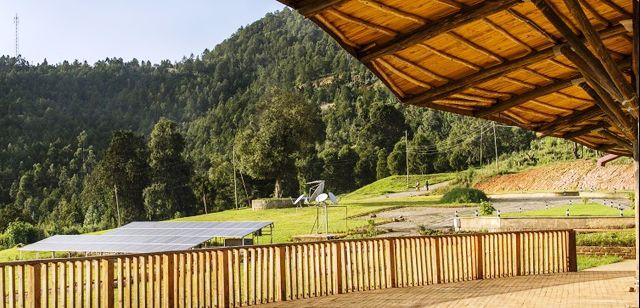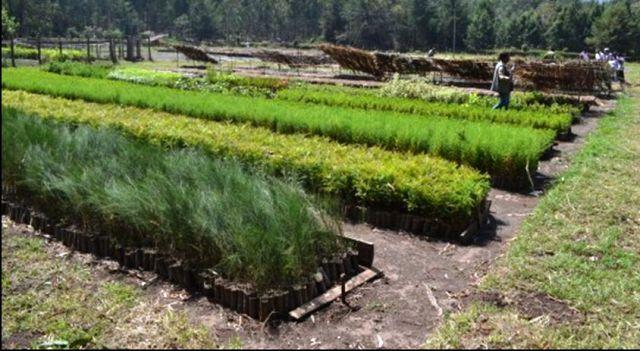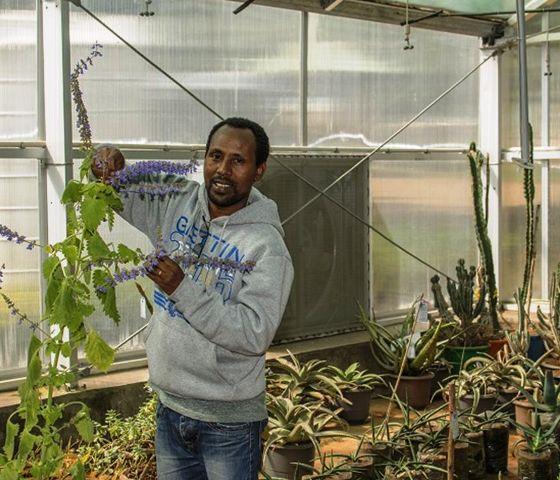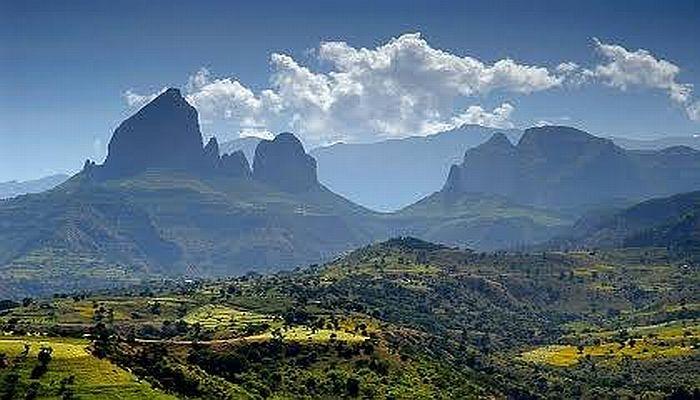
Ethiopian Vegetation
Find All There is to Know About Ethiopian Vegetation
Ethiopia is known for having a very diverse range of topography and climatic environments. Located in the Horn of Africa it has one of the most abundant collections of plants on the African continent.
It is the home of various internationally important crop species, such as Coffea Arabica (coffee).
Ethiopia also has a high diversity of tree species, most of which are restricted to Ethiopia and its bordering countries or endemic to the country. As a result of this diversity, almost every major type of vegetation can be found in the country.
Conservation in Ethiopia in Urgently Needed
According to a publication by Global Trees Campaign entitled Red List of Endemic Trees and Shrubs of Ethiopia and Eritrea; six species were attributed as threatened, among those were the following:
* Acacia bricchettiana is assessed as Critically Endangered and reported as known from only two type collections.
* Acacia prasinata, also assessed as Critically Endangered. Despite occurring in a National Park, the remaining populations of this species are reported to be threatened by overgrazing and cutting for firewood.
* Hagenia abyssinica is native to the Afromontane regions of central and eastern Africa. Despite a fairly large range, deforestation is occurring across these regions and this species is becoming locally rare in some areas. This species is noted as being of serious conservation concern within Ethiopia in the 2005 Red List publication. H. abyssinica is used locally in Ethiopia for timber and as a source of medicine. There is a great need to increase conservation work of this important species to support wild populations and provide material for reintroduction and restoration projects in future.
* Juniperus procera is assessed as Least Concern on the IUCN Red List due to a current wide distribution, however the population is reported to be declining due to continuing exploitation and deforestation. The species is noted to be at particular risk in Ethiopia and Kenya, due to depletion of old growth forest groves of this species. As the only juniper species occurring in Sub-Saharan Africa, J. procera should be an important conservation priority for countries within its range.

Hagenia Abyssinica and Juniperus Procera
Botanical Gardens, Nurseries, Arboretums in Ethiopia
The introduction of botanical gardens, nurseries and arboretums in Ethiopia is an important breakthrough for those hoping to conserve some of the threatened species.

image credit: psmag.com - Gullele Botanic Garden
Projects such as the restoration of the arboretum at Wondo Genet College of Forestry and Natural Resources and the Gullele Botanic Garden (GBG) plan to play a vital role in the conservationism effort.

Nursery in Wondo Genet College
GBG is already home to over 780 plant species endemic to Ethiopia, and both projects plan to maintain a national collection of endangered and endemic tree species for research, education, and conservation.
They have already begun to create links with international community partners and various other botanical gardens and organizations in Ethiopia.

image credit: globaltrees.org - Nursery in Gullele Botanic Garden
8 Classified Groups of Vegetation in Ethiopia
Desert and Semi-desert scrublands:
Represented by drought resistant woody plants - Acacia, Commiphora, Boscia, Cadaba, Maerua, Ziyphus. Non-wooded plants - Euphorbia, Aloe. Grasses - Dactyloctenium Aegyptium, Panicum Turgidum.
Small-leaved, deciduous woodland of Acacia-Commiphora:
The altitudinal range in which the ecosystem is found is 1000-2000 meters above sea level. Drought-tolerant tree species and shrubs, with either small deciduous leaves or leathery, persistent ones characterize this vegetation-type and typical species include Acacia tortilis, A. mellifera and Balanites aegyptiaca together with various species of Commiphora, Capparis, Combretum and Terminalia. The ground layer includes the herbs Acalypha and Barleria.
Moist evergreen Montane Rainforest:
The montane moist forest ecosystem encompass high forests of the country mainly the southwest forests, which are the wettest, and also the humid forest on the southeastern plateau known as the Harenna forest. The montane moist forest ecosystem is distinguished by supporting abundant growing epiphytes Canarina, Orchids, Scadoxus and fern plants such as Platycerium and Drynaria. Mosses also crop up in the wettest part of forests coupled to major branches and barks of trees.

image credit: simienpark.org - Semein Mountains
Lowland semi-evergreen forest:
Distinguished by a range of mainly semi-deciduous tree and shrub species. Woody species include the evolving trees Celtis toka, Diospyros abyssinica, Malacantha alnifolia and Zanha golugensis, while shrubby species include Alchornea laxiflora, Oncoba spinosa and Whitfieldiaelongata.
Broadleaved, deciduous woodland of Combretum-Terminalia and Savannah: tree species in these woodlands are little in size with moderately large deciduous leaves and an understory of herbs and grasses. The prevailing trees and shrubs are Combretum and Terminalia spp., Boswellia papyrifera, Lannea schimperi, Anogeissus leiocarpus.
Dry evergreen montane forest and grassland complex:
This type is distinguished by trees of different sizes and widespread grasslands that are rich in legumes. General tree species include Juniperus procera, Olea europaea, Celtis africana, Euphorbia ampliphylla, Mimusops kummel and Ekebergia capensis. Characteristic shrubs include Dracaena spp., Carissa edulis and Rosa abyssinica, while ordinary grass species belong to the genera Hyparrhenia, Eragrostis, Panicum, Sporobolus, Eleusine and Pennisetum, and the legumes include Trifolium, Eriosema and Crotalaria spp. The forest-grassland ecotone is occupied by Acacia woodland with abyssinica, A. negrii and A. pilispina the commonest trees.
Afro-alpine and sub-Afro-alpine vegetation:
The areas which on the average higher than 3300 meters above sea level. This vegetation-type is distinguished by small trees, shrubs and shrubby herbs at lower altitudes and, at higher altitudes, herbs and tuussock-forming grasses. Common tree and shrub species include Erica arborea, E. trimera and Hypericum revolutum. Herbs in this area are the giant lobelia Lobelia rhynchopetalum, Kniphofia foliosa, Bartsia petitiana and various Alchemilla species. Festuca, Poa and Agrostis spp. are common grasses.
Riparian and swamp vegetation:
Common tree species include Celtis africana, Ficus sycamorus, Mimusops kummel, Tamarindus indica, Maytenus senegalensis, Acacia spp., Kigelia aethiopium and Syzygium guineense. Swamps are dominated by sedges (especially species of Eleocharis and Scirpus), grasses (particularly Echinochloa spp.) and many herbs.
